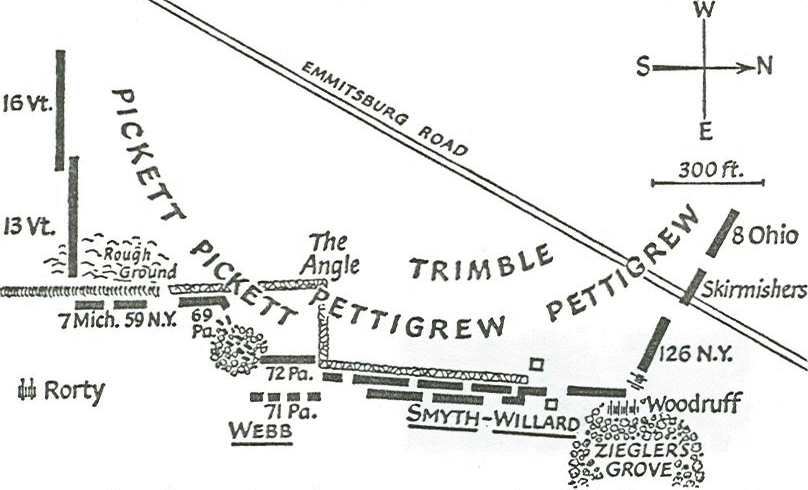|
My ancestor Thomas D. Falls was born in 1844 in Cleveland County, North Carolina and died there in 1905 at the age of 64. He was a true Christian, Southern born and every drop of his blood was a true Southerner. He was also a life long Democrat and member of the Medodist Church from the age of nine.
Thomas was 18 years old when he enlisted as a Sargent in the Cleveland Grays, a unit raised and enlisted in Cleveland County on 29 March 1862. The Grays became Company "C", of the 55th North Carolina Infantry Regiment. The 55th was organized at Camp Mangum, near Raleigh, North Carolina, in May of 1862 under Colonel John K. Connally. It was comprised of ten companies recruited from eleven different North Carolina counties including Cleveland County.
After their drilling and training was complete, the 55th N. C. served in the Department of North Carolina and was sent to the Pamlico Sound area where it remained for several months and saw no action. On August 7th, 1862, the regiment was first fired upon by a federal gunboat sailing up the Neuse River. In September, they fought and liberated Washington, N. C. from union control, but only for a few hours. Armed with only smooth-bored muskets, they were no match for the gunboat cannons and long range federal rifles.
In October 1862, the regiment was ordered north to Virginia. After months of drilling, discipline and waiting the 55th along with the 42nd and 2nd Mississippi regiments were formed into a brigade in the Army of Northern Virginia under Brig. Gen. Joseph R. Davis. They then began preparations for the incursion into union territory across the Potomac that lead to Gettysburg. By this time Thomas Falls had been elected and accepted a commission as a 2nd Lieutenant.
The 55th was a part of Major General Henry (Harry) Heth's Division, (Third Corps, Lieutenant General Ambrose Powell Hill commanding), consisting of the brigades of Pettigrew, Davis, Archer, Brockenbrough, and Garnett's artillery. This division is usually given the credit for starting the Battle of Gettysburg while in search of shoes.
During the Battle of Gettysburg, the Davis Brigade lost many members in the charge of the 6th Wisconsin on the unfinished railroad cut on July 1st 1863. Its Colonel, J. K. Connally was wounded in that engagement.
The 55th also participated in the famous and glorious “Pickett's Charge” on the 3rd of July 1863. At Gettysburg, the 55th N. C. had a total strength of 640 men. Total casualties for the regiment; 55 killed, 143 wounded, 22 captured or missing for a total of 220 casualties. Three of these casualties account for the Tarheel State’s claim to fame, "Farthest at Gettysburg". They were Captain Edward F. Satterfield of Company H, Lt. Thomas D. Falls, Co. C, and Sgt. J. A. Whitley of Company E who advanced farther than any Confederate soldiers during that fatal charge and helped create the "High-water Mark of the Confederacy". Captain Satterfield was killed nine yards from the Union stone wall. Lt. Falls led the Cleveland Grays to within several yards of the rearward stone wall where he was wounded and he and Sgt. Whitley were captured. This was the farthest advance of any troops in the assault.


The High Water Mark - 3:50 PM - July 3,1863
Thomas Falls spent 21 months with 2,000 other prisoners on Johnson’s Island, Lake Erie near Sandusky, Ohio. The prison contained only Confederate officers, and the occasional private due to clerical errors. When the war ended on April of 1865, and the federal government ordered that Johnson's Island be abandoned on June 8, 1865 and its inmates paroled.
After the war Thomas relocated near Booneville, Mississippi where he met and married Emmie Gardner and their marriage was blessed with five sons. They later returned to the family place in Cleveland County, N. C., where he lived out his years as a highly respected citizen.

|

